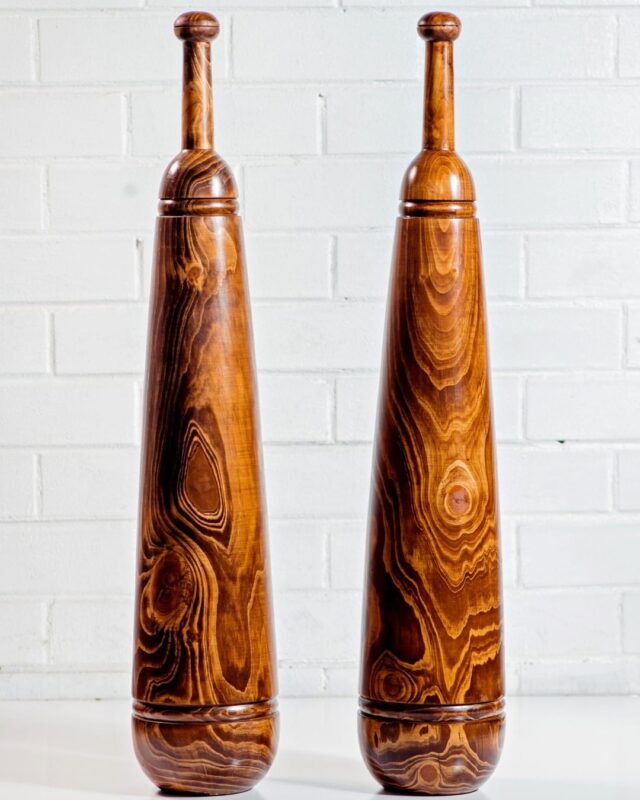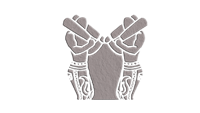4.0 Meel (Persian clubs) variations
Hopefully by now you have mastered the fundamentals of Persian Meel – the father of all clubs. You will have experienced that Meel swinging is much more than a physical act. It is a dance. A recitation. A spiritual approach to strength and movement. An integration of the human body and mind merging with the immaterial as the organic wooden Meel begin to swing and dance in circles and thug loose from gravity for the split seconds as they reach the highest point of the circle. The drum, the bell, the reciting voice create the poetic of the human beyond the reality of hard life into a spiritual sphere. This is indeed a higher culture than the up and down lifting of heavy iron.
All our movements with the Meel are efficient, fluid and target oriented, i.e:
Efficient; the Meel moves as an extension of the arm. It should move, and be held, close to the body but without touching each other or the body. Remember it is not about swinging them in sets and reps of 6-12 but in thousands of swings. I have read that in one single battle a foot soldier would swing their arms ~ 3000-4000 times.
Fluid; the movements are continuous, uninterrupted and should link together seamlessly. With practice these movements take an effortless appearance that is deceptive to inexperienced eyes who perceive it as something easy.
Target oriented; there is an inherent intent behind every movement that can translate to a strike, hence it is important to lead with the head of the Meel.
The following variations are meant to increase the coordination and leverage intensity. We are now starting to incorporate larger circles and also move in additional ranges and planes of movement. As with all type of Meel swinging we are striving for efficient, fluid and target oriented movements.

A note on gripping and various grips.
Pinky grip. Used most of the times and particularly with 4 and 2 count standard swings.
Ok sign grip. Used mainly with wrist rotations.
Ice Cream cone grip. Used mainly with forward and side swings.
Thumbs up grip. Used mainly with overhead presses.
It is important to remember to be adaptive and dynamic as you swing and change between grips as necessary. Swinging should be very fluid and ever changing between the various grips during variations and the execution of the swings.
Four count swings revisited
If I had to pick only one exercise with the Meel this would be it! I will in this section elaborate on the bio-mechanics of the standard four count swing, AKA strike swing, the most important fundamental exercise that will enable you to understand Circular Strength Training and to master swinging . It is of utmost importance to reiterate that the Meel should be held upright with the head of the Meel leaned in slightly towards the body and with the hands kept below waist level. And that everything we can do should be done on both sides, front to back and in reverse. That is why we train with two Meel. It is a way of becoming ambidextrous. It may help, in particular with the standard 4 count swing, to envisage the Meel that you hold in front of you as the shield arm and the Meel that swings (behind the back) as the strike, or weapon, arm. I will be referring to the Meel in each arm as the shield arm and strike arm respectively.
Backward swing phase
The backward swing phase, or the cast as it is also erroneously called (it’s not a cast it’s a swing!). As we swing with the strike hand it is important to aim for full flexion at the shoulder, elbow and wrist. It helps to get full flexion, particularly at the wrist, if you keep the Meel with a relaxed pinky grip.
It is when you are achieving the full depth of the circles, in conjunction with full limb flexion, that the weight of the Meel will stretch and lengthen your connective tissue as you swing. This is one of the many wonderful aspects of Meel swinging as it increases the range of motion and also simultaneously imbibes strength throughout the effective range of motion as you are working with resistance.
As an aside it is important to recognise that there is a process of muscle micro atrophy within 24hrs of not using the joints, and associated muscles, in their full effective range of motion. These micro atrophies add up. Furthermore joints and muscles that are used in full range of motion are not only healthier (synovial fluid and circulatory homeostasis) but also experience increased strength and muscle thickness relative to partial or mixed range of motions.
Key point: do the swings and all other movements in the full and entire range of motion.
Simultaneously with the full flexion occurring with the strike arm the shield arm is externally rotating, i.e. the shield arm moves in an outward circle as the strike arm moves in a backward circle. This leads to a nice thoracic cage expansion (breath in) that needs to be guided through the core and culminates in a thoracic contraction again guided through the core.
Forward swing phase
From the furthest point of the backward swing phase commences the forward swing phase. This is when the contraction of the thoracic cage is coordinated with the decussation (crossing the mid-line) of the strike hand and the internal rotation of the shield hand and shield side foot.
It may help to visualise the forward swing with the strike hand as pulling a rope with a weight attached to it, where you essentially pull the rope over your shoulder and across the chest. First the shoulder starts to extend and the elbow starts to move forward and across the mid-line and as the elbow begins to extend then the hand decussates and moves towards the contra-lateral hip. In the final part of the forward swing and as the strike arm begins to externally rotate, to come to the starting posture, finally the wrist extends.
The forward swing phase of the strike arm needs to be coordinated with the internal rotation of the shield arm and the shield side leg. Remember that we are also stepping (pivoting on the heel) towards the shield. It is this interplay of alternative expansion and contraction coupled with balancing your core and centre of gravity between the two Meel that develops the crucially important and beneficial skill of core coordination. It is this skill that enables us to accurately and appropriately position our body’s centre of gravity in relation to the external world and objects. And it makes the difference between pulling a muscle and correctly aligning the body in response to a movement sequence and external load. In my experience, and that of many of my students, it really helps if you actually count the four count out loud as you practice the rhythm of the swing.
Helpful hints:
- The swing can be initiated from the left as well as the right side.
- Lower and swing the Meel. Do not drop, throw or cast the Meel, see discussion on throwing in Fundamentals manual.
- Always move with intent.
- Lead with the head of the Meel.
- Always minimise momentum and acceleration.
- Strive for a fluid, continuous and efficient swing.
